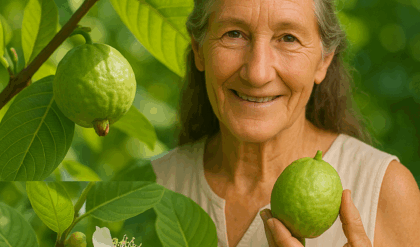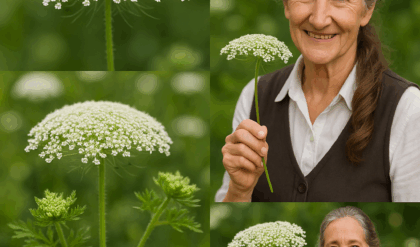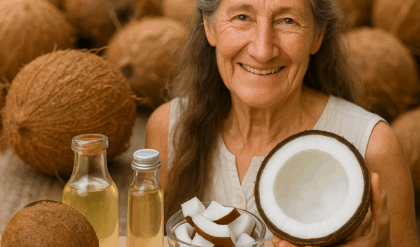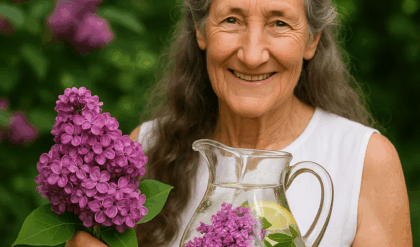Imagine plucking a ripe, golden papaya straight from a pot in your own backyard or balcony. No need for a tropical orchard. No need for acres of land. Just one pot, the right knowledge, and nature’s magic. If you think growing papaya is only for tropical farmers, think again—because you can grow it successfully in containers, even in non-tropical climates.
Here’s how to unlock the full potential of this vibrant fruit, from seed to harvest, all within the comfort of your home.
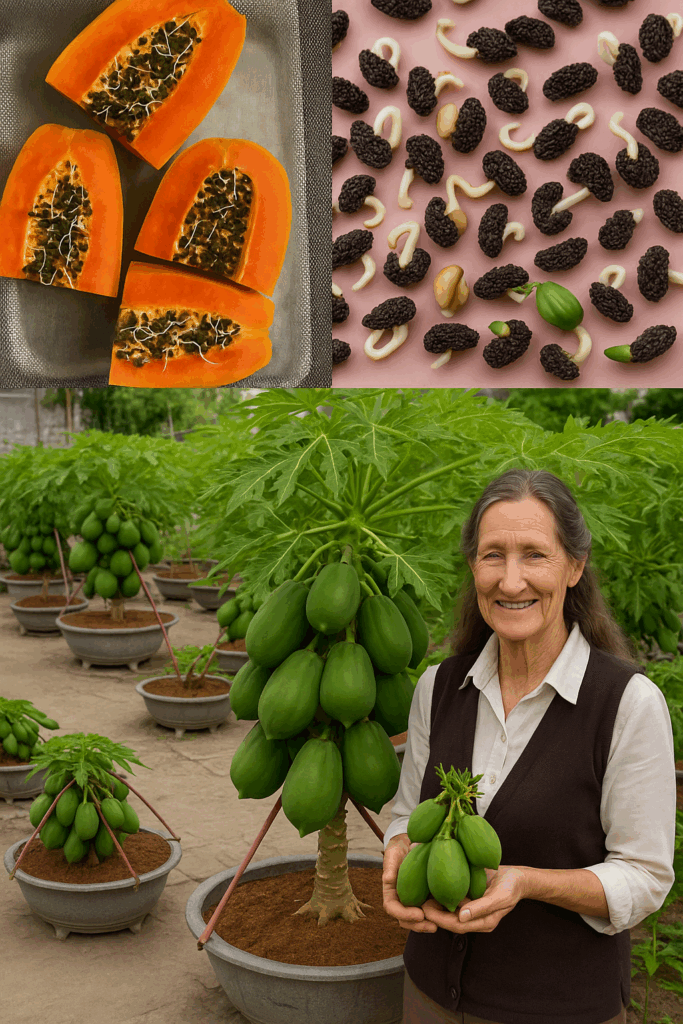
🌱 Start with the Right Seeds
Everything begins with the seed. Choose a fresh, ripe papaya—preferably organic and local if possible. Cut it open and scoop out the black, jelly-coated seeds.
✔️ Rinse them thoroughly to remove the pulp
✔️ Let them dry in a cool place for 1–2 days
✔️ Store extra seeds in a dry, airtight container—they’ll keep for months
🌡️ Germination: Where the Magic Begins
Papaya seeds thrive in warmth. Germination is quick if you give them the right environment.
💧 Use the paper towel method for reliable sprouting
– Moisten a paper towel (not soaking)
– Spread seeds evenly
– Fold and place it inside a ziplock bag
– Store in a warm spot (75–85°F / 24–29°C)
– In 7–14 days, watch for tiny roots to emerge
Once you see sprouts, it’s time to plant them in pots.
🪴 Choosing the Perfect Pot
Papayas are fast-growing trees with shallow roots, so they need room to stretch.
✔️ Use a large container—at least 10 to 15 gallons
✔️ Ensure it has multiple drainage holes
✔️ Add gravel or broken clay shards at the base to prevent root rot
🌿 Soil That Feeds and Drains
Papaya hates soggy roots but loves rich soil.
✔️ Use a well-draining potting mix (not pure garden soil)
✔️ Mix in compost or aged manure to improve fertility
✔️ Aim for a soil pH of 6.0 to 6.5—slightly acidic is ideal
🌞 Sunlight: The Key to Growth
Papayas are sun lovers. Without sunlight, they won’t thrive or fruit.
☀️ Give them at least 6–8 hours of direct sunlight per day
☀️ Position them near a south-facing wall, patio, or balcony
☀️ Indoors? Use full-spectrum grow lights during colder months
💧 Watering Wisely
Papayas are thirsty, but not soggy.
✔️ Water when the top inch of soil feels dry
✔️ Water deeply to encourage strong roots
✔️ Avoid letting water pool at the base—papayas are prone to root rot
🧪 Feeding Your Plant
These tropical powerhouses are heavy feeders and will reward you if well-fed.
✔️ Use a balanced fertilizer (like 10-10-10) every 2–4 weeks during growth
✔️ Once flowering starts, switch to a fertilizer rich in phosphorus and potassium to boost fruiting
✔️ Liquid seaweed or compost tea is a great organic option
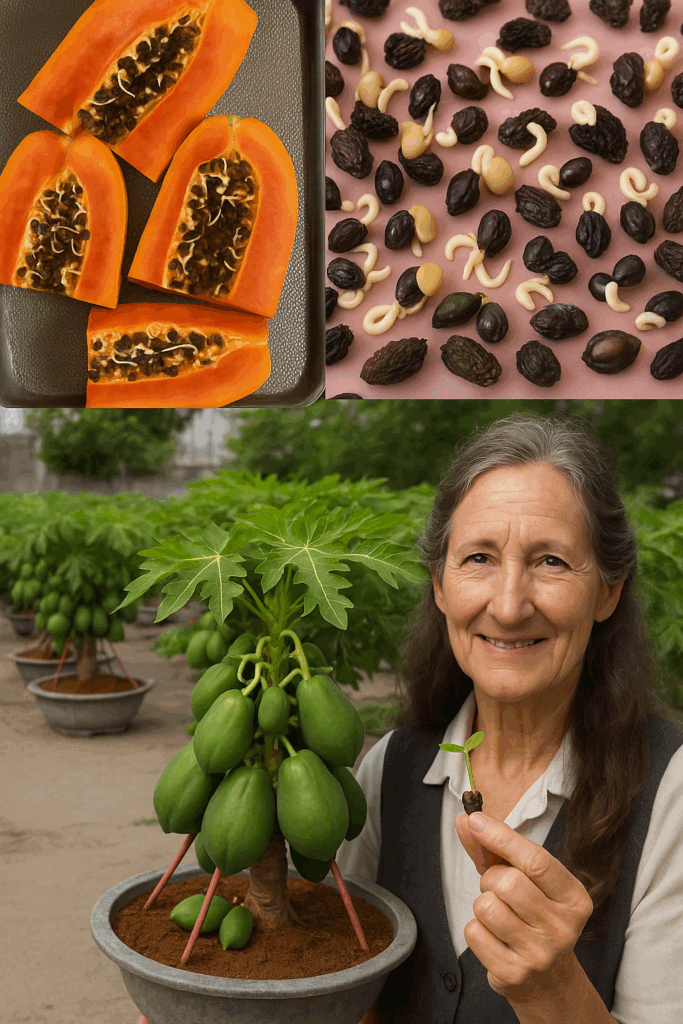
✂️ Keep It Tidy: Pruning and Support
While papaya trees don’t need extensive pruning, some light maintenance helps.
✔️ Remove yellow or damaged leaves regularly
✔️ Trim lower leaves to prevent pests and increase airflow
✔️ Use a stake or support pole as the tree grows taller—this prevents it from toppling when heavy with fruit
🐛 Watch Out for Pests and Diseases
Even in pots, papayas can attract unwanted guests.
🚫 Aphids
🚫 Mealybugs
🚫 Spider mites
🚫 Fruit flies
✔️ Spray neem oil or insecticidal soap as needed
✔️ Keep the area clean and dry
✔️ Remove decaying leaves and fallen fruit promptly
🍈 When and How to Harvest
The moment you’ve been waiting for!
✔️ Papayas usually begin fruiting in 6–9 months
✔️ Harvest when the skin turns yellow or orange and feels slightly soft
✔️ Twist gently to remove the fruit without damaging the stem
✔️ Avoid pulling—this can harm future fruit development
🌀 Lifespan and Regrowth
Papaya plants are short-lived but prolific.
– Most plants live 4–6 years
– As they age, productivity drops
– Save seeds from your best fruit and restart the cycle for continuous harvests
📝 Why Growing Papaya in Pots Is a Game-Changer
✔️ You don’t need a tropical climate—just sunlight and a pot
✔️ You control the soil, water, and nutrients
✔️ It’s perfect for urban gardening, balconies, patios, and small yards
✔️ You get fresh, homegrown, pesticide-free fruit year-round
💡 Bonus Tip: Male vs. Female Plants
Papayas can be male, female, or hermaphrodite.
✔️ Female plants produce fruit but need a male nearby for pollination
✔️ Hermaphrodites self-pollinate and are the best option for small spaces
✔️ If you’re growing multiple plants, keep the strongest and most productive one
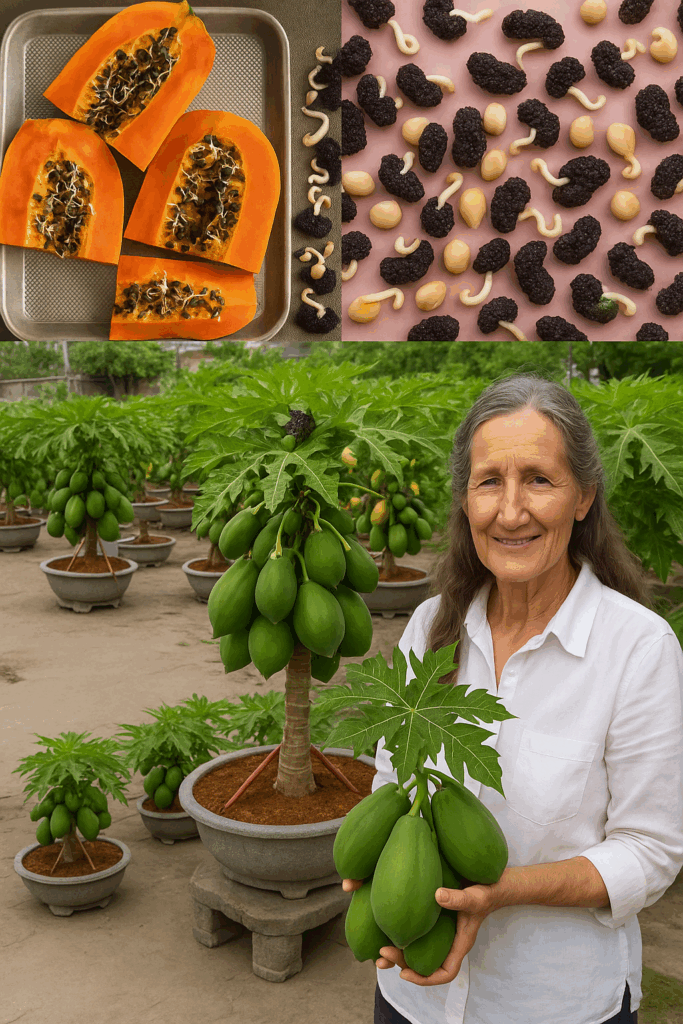
👩🌾 Final Thoughts: Sweet Rewards in Small Spaces
Growing papaya in pots isn’t just a trend—it’s a sustainable way to enjoy fresh, juicy fruit wherever you live. Whether you’re in a high-rise or a small suburban home, a little effort goes a long way.
You’ll be amazed at how quickly your tropical tree grows, how fragrant the flowers become, and how satisfying it is to enjoy a fruit you grew with your own hands.
Ready to turn your patio into a mini papaya paradise?
Start with a seed. End with a harvest.
📦 Found this helpful? Share it with your fellow gardening enthusiasts and inspire someone to grow their own tropical bounty!

